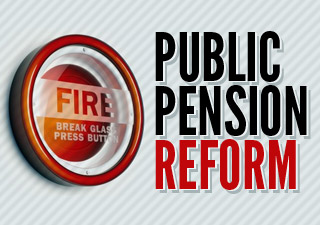Media
Public Pension Crisis Averted?

Has Pennsylvania’s public pension crisis been averted? Not by a long shot.
This weekend, the Tribune-Review heralded a $69 million budget surplus in the Pennsylvania School Employees Retirement System (PSERS) for 2011-2012. The article vaguely attributes the surplus to, “Smaller-than-expected payrolls.” Translation? Teacher layoffs.
Regrettably, more than 6,000 teachers have been laid off over the last two years alone. One major cause is that lawmakers pushed off pension costs for the last decade, while school payrolls ballooned during the same period.
Taxpayers are now left facing a pension tsunami: The bills are finally coming due, and teacher layoffs are one of the most visible consequences.
Further cuts and layoffs—along with significant tax hikes—will continue if the pension crisis remains unaddressed.
The fact is, the newly announced $69 million surplus is barely a drop in an ocean of debt. PSERS 2012 report details an unfunded pension liability of $29.5 billion. Add state worker’s pensions (SERS) and the number jumps to $47.4 billion.
To give you some perspective, a $69 million dollar surplus would be required every year for almost 700 years to pay down the current liability. Even if lawmakers put the surplus back into the pension system—which they are not obligated to do—the result would be virtually unnoticeable. In fact, both SERS and PSERS project their debt to grow over the next few years, as current law puts less into pension plans than financial experts say is necessary.
Rather than using it as an excuse to leave the broken system intact, this temporary pension surplus and its cause—teacher layoffs—should serve as a warning of the human cost of inaction.
Real reforms like switching to a 401(k)-style “defined contribution” retirement plan would stop adding to the problem, end the political manipulation of pension plans, and help avoid future pension crises that cost teachers their jobs.